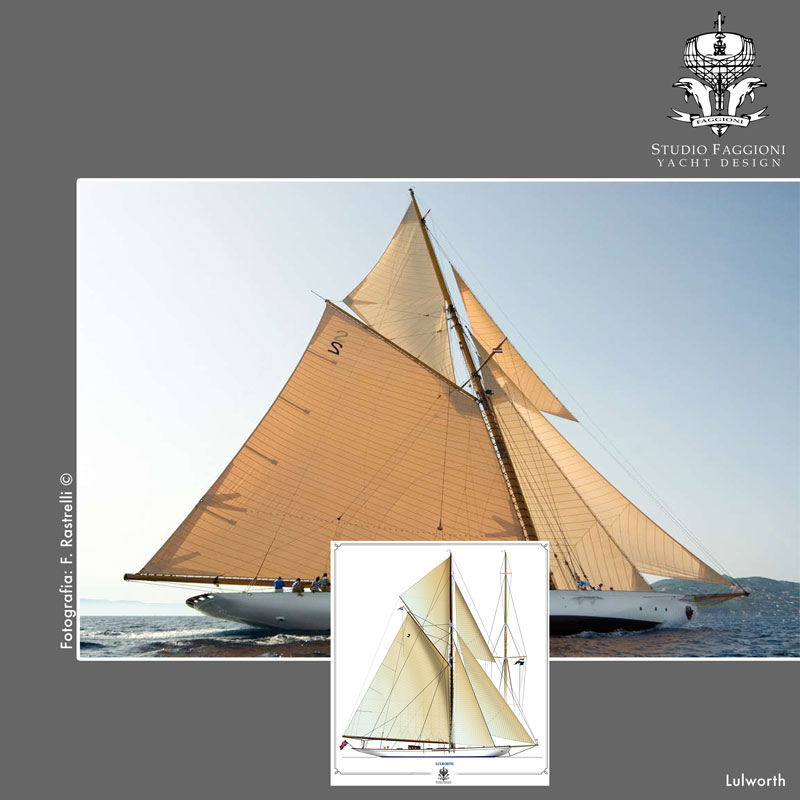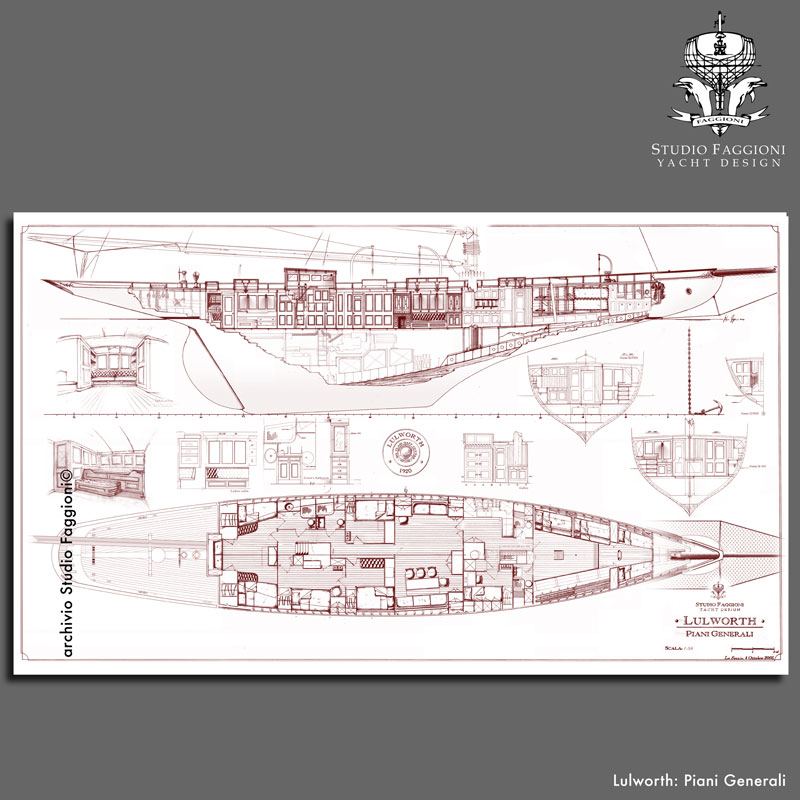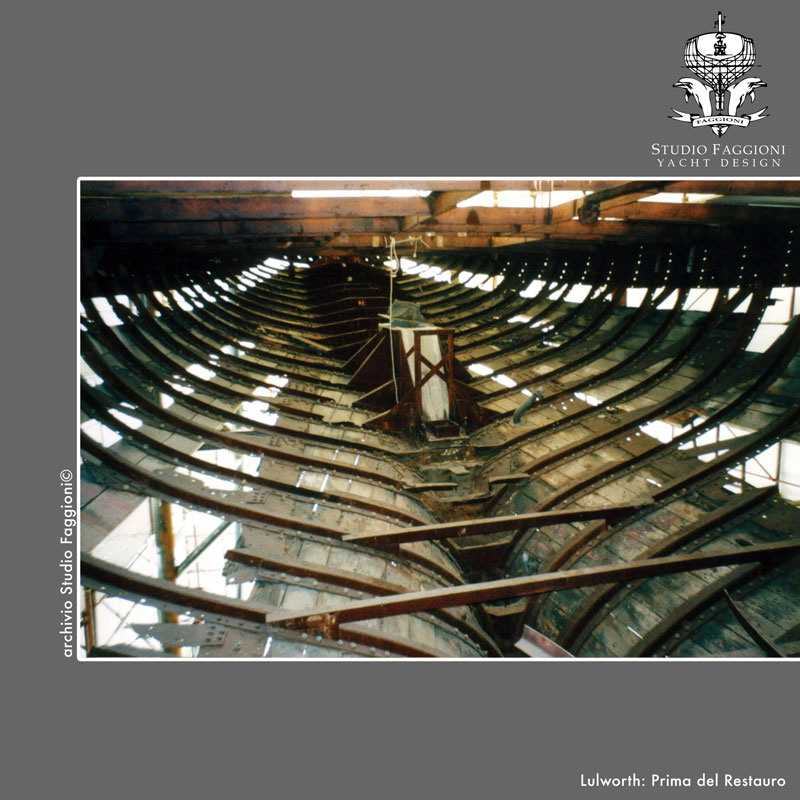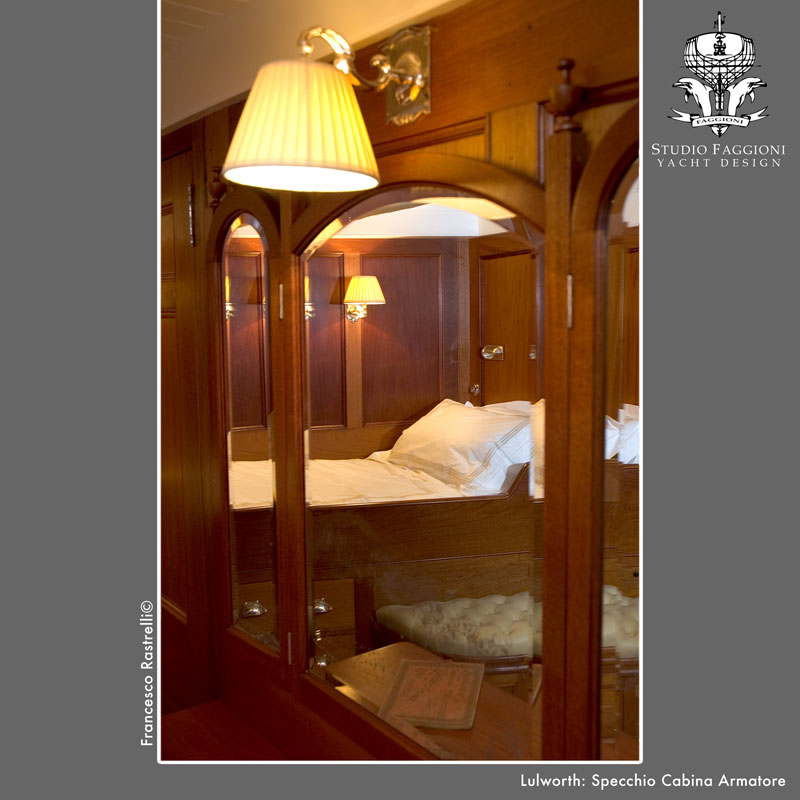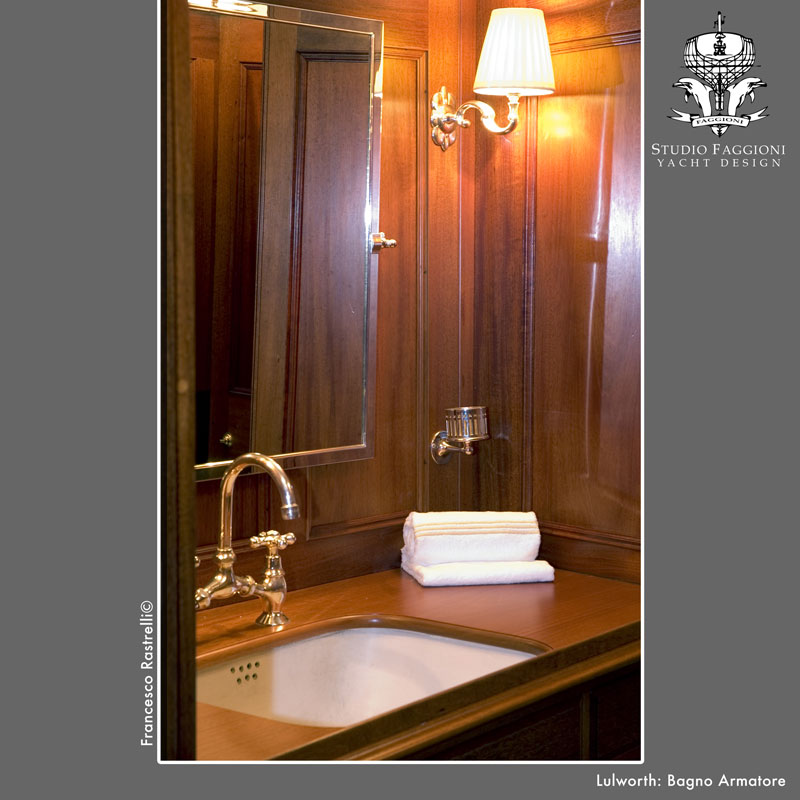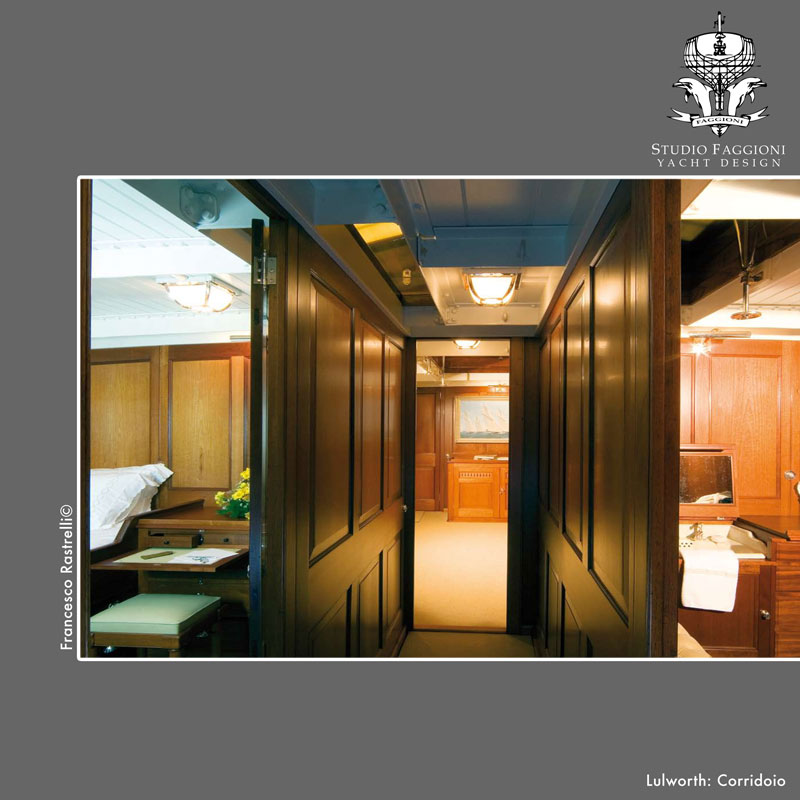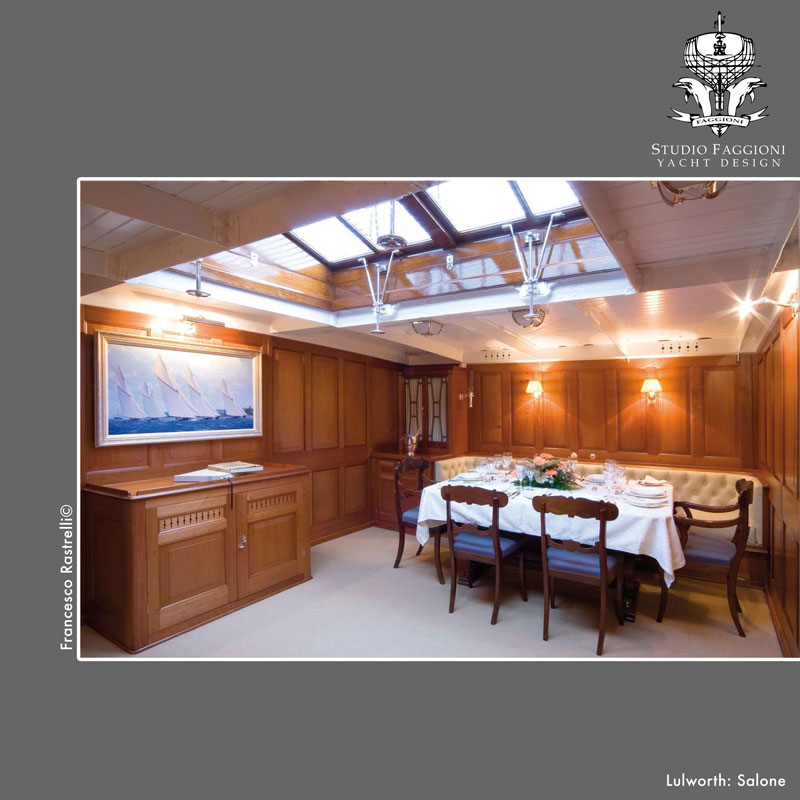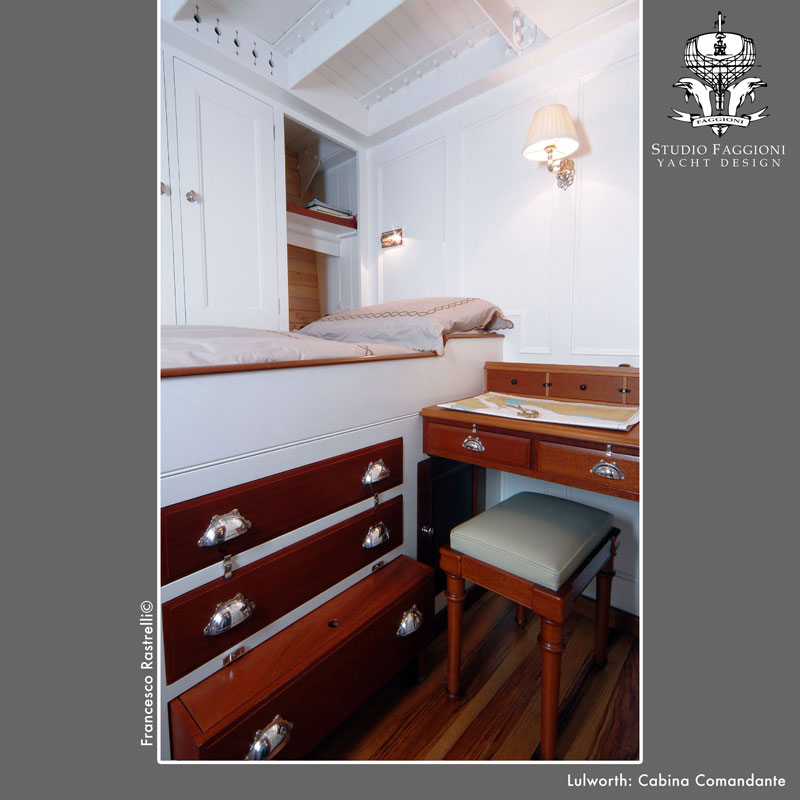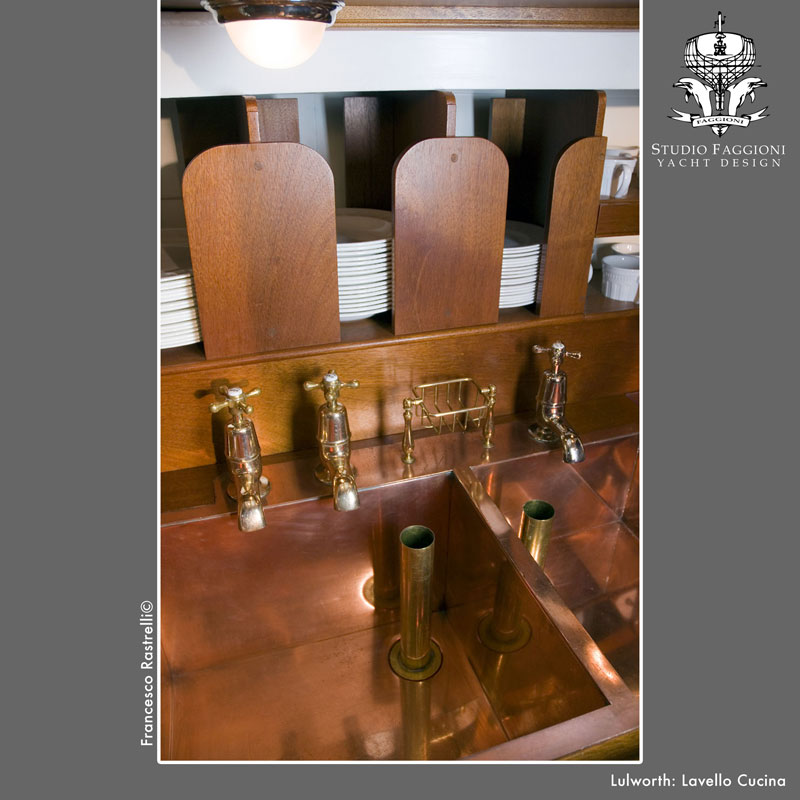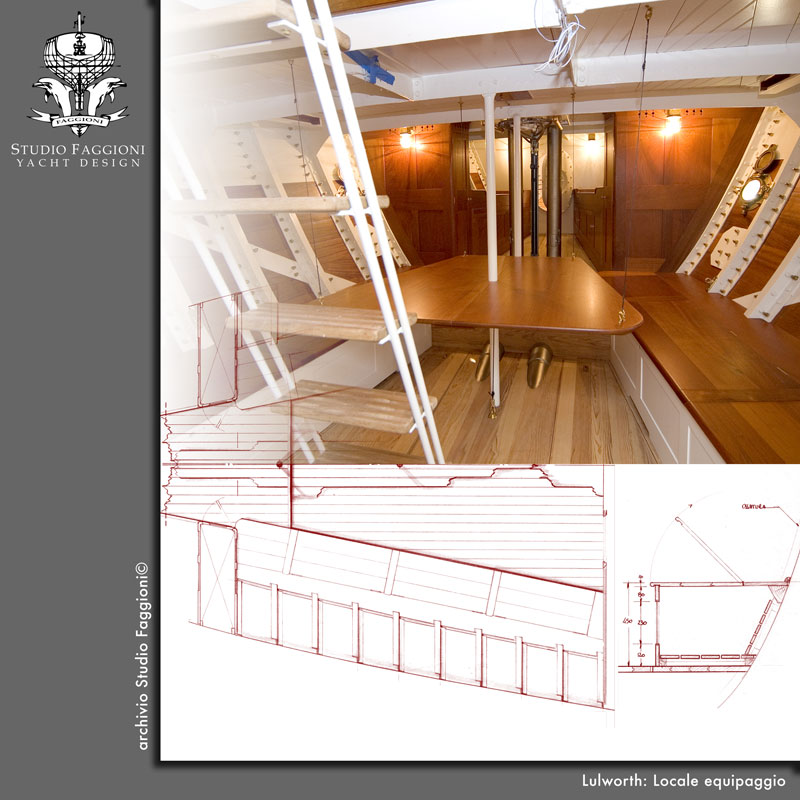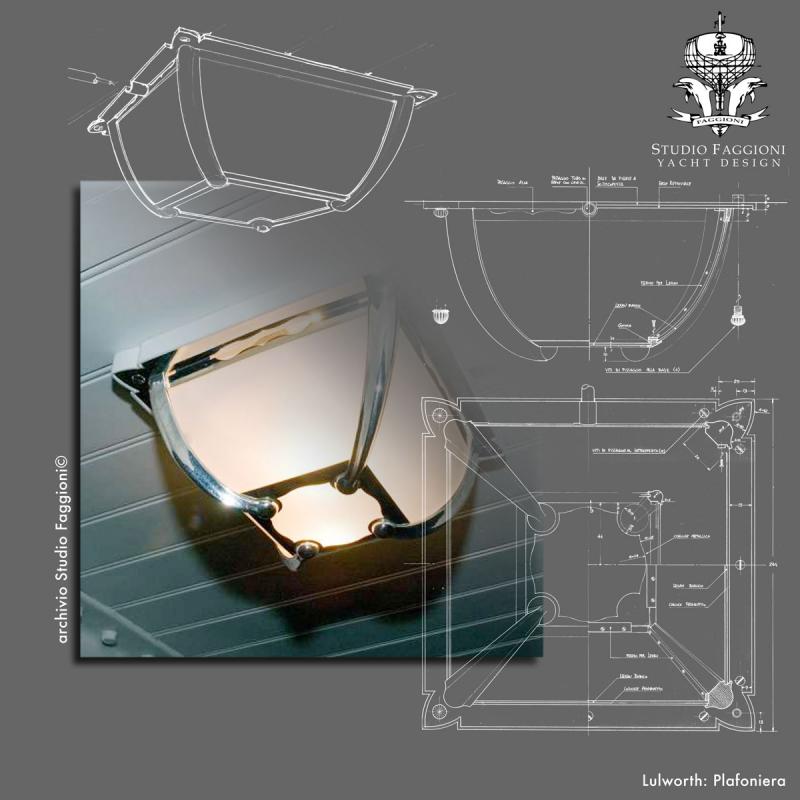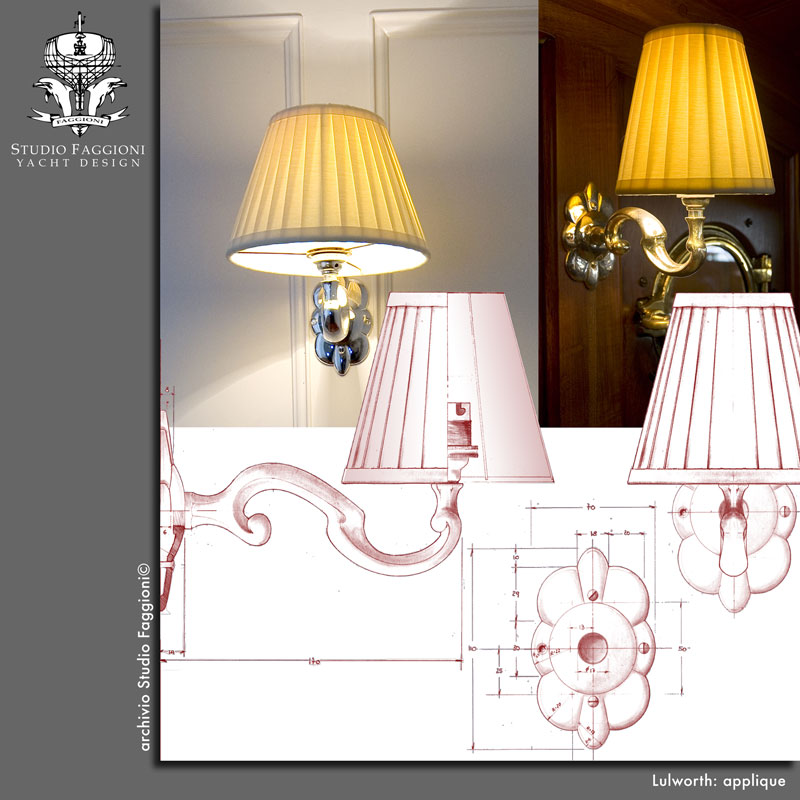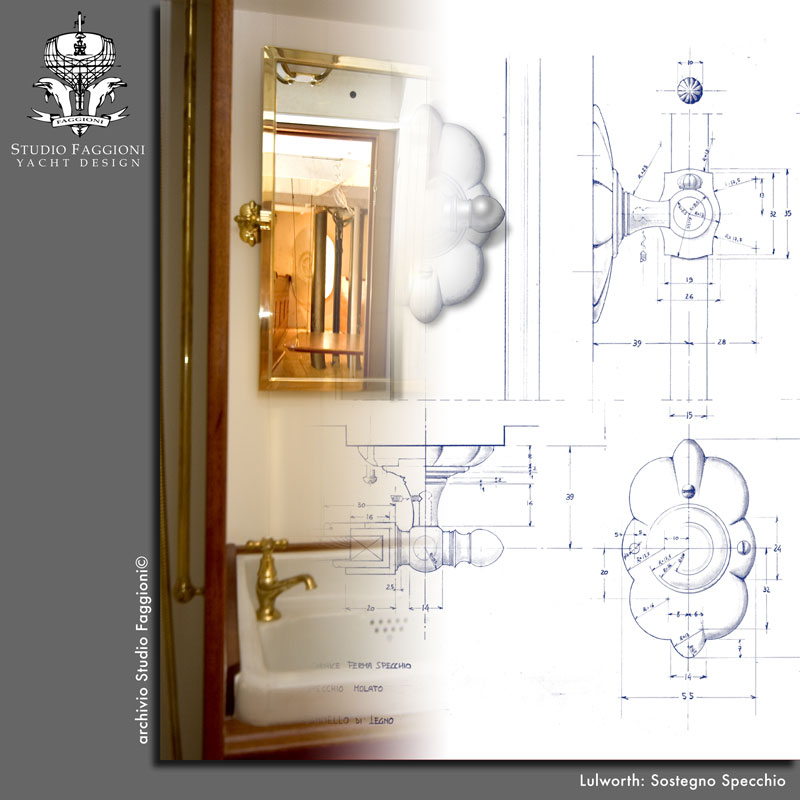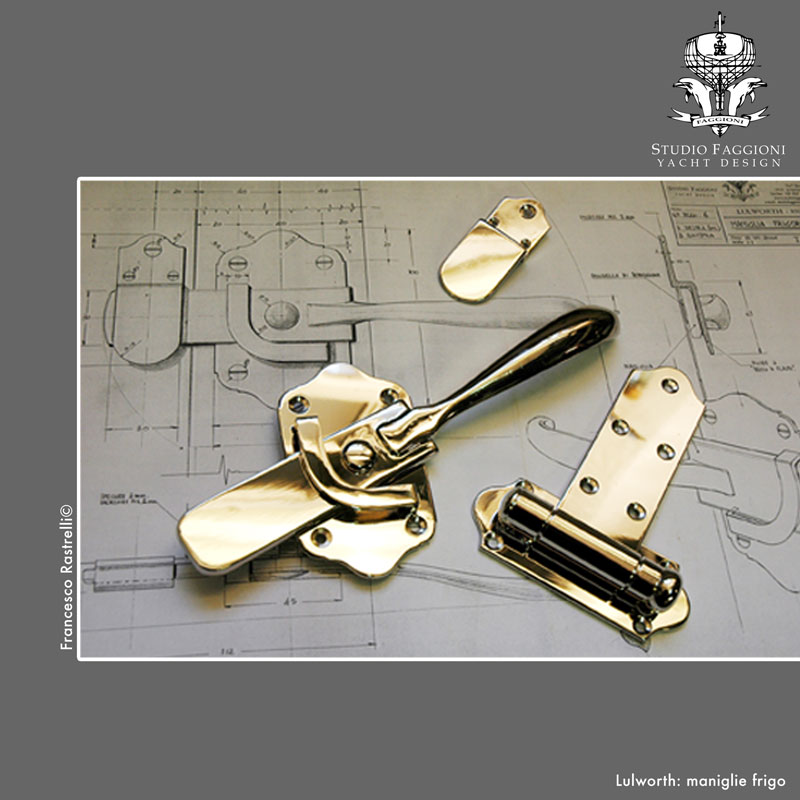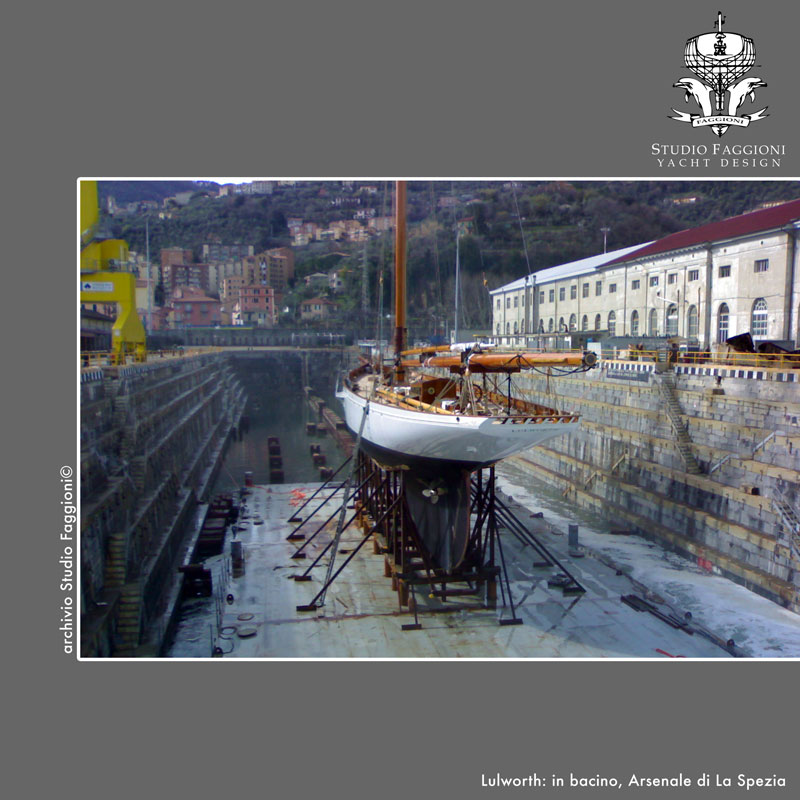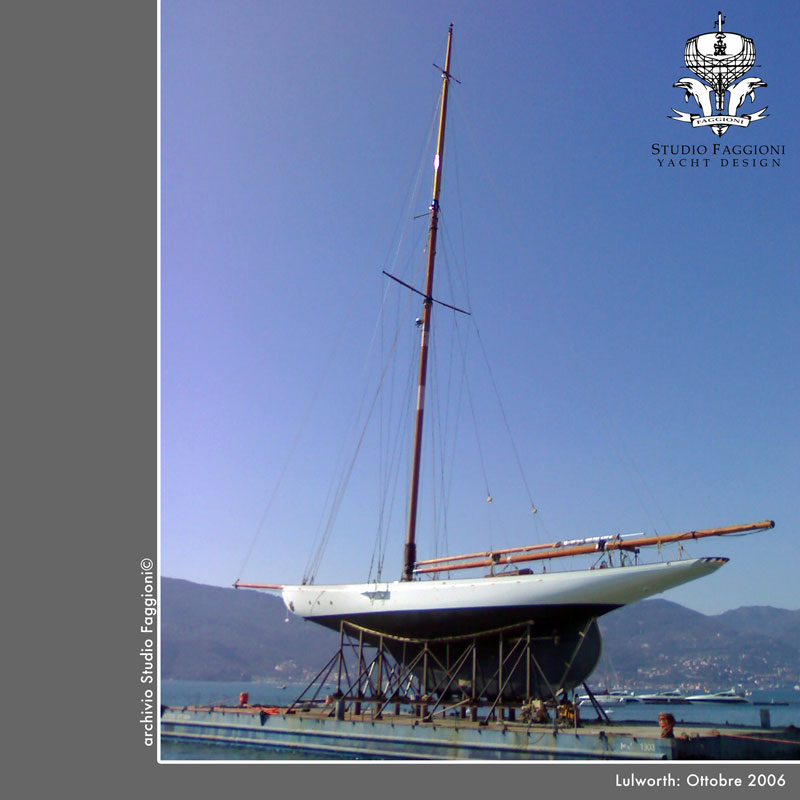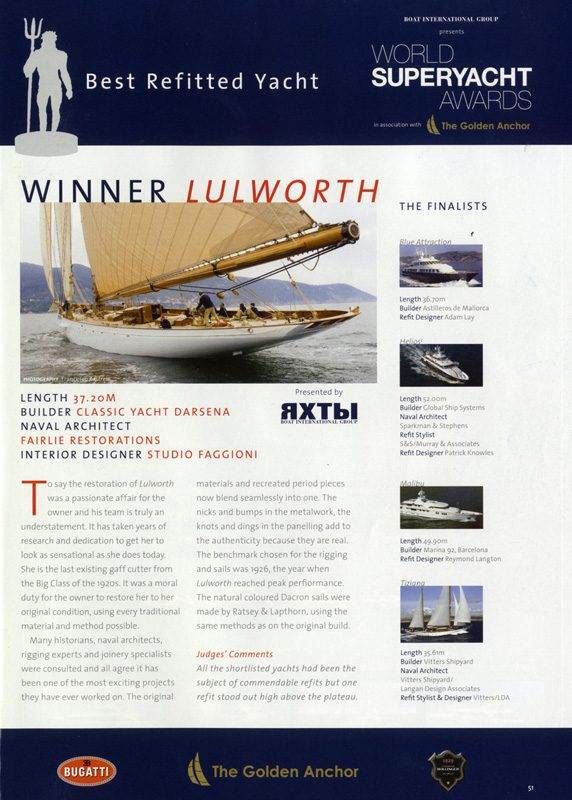Lulworth
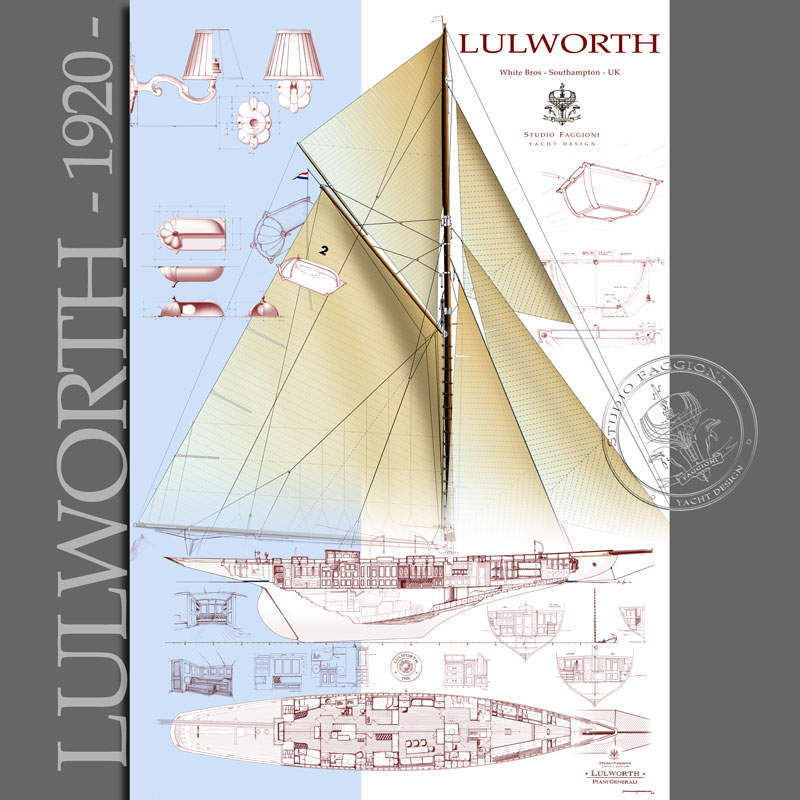
It is a 'briefly' lasting 5 years... It has been an all-round work. We did not deal with the sail part, although we would have really liked to, because the boat was bought with an already-completed mast, but as to the interior, that took five years of hard work. First of all, we had to catalogue all the contents.
Unlike many other boats that today undergo restoration, we had to catalogue various parts of the existing interior (the saloon including up-and-over stanchions and table, the corridor's bulkheads, etc.): these were all scattered objects. Gathering, cataloguing and then physically locating them in space was certainly the longest work which went on till the end. What remained of the boat at the start of its restoration plan was basically the shell of the hull, while the still-existing interior elements were stripped and stored in boxes.
Including the pre-existing bulkheads in the design was an even more complicated job. Drawing a general plan from scratch is a particular job but, all in all fairly simple, if compared to the need to create a general plan with an existing restriction.
On the one hand, I had to deal with original bulkheads that needed to be put in place ? with the awareness that I had to place them exactly in the right spot ? and, on the other, with a 'stripped-to-the-bone' hull. Then, after the 'first step' and at long last having found their final location, I had to work around the existing elements in the drawing: it was an extremely complicated mental and design procedure. Also because, when a design, what's more hand-made, does not move for three or four months from your table, it starts to become heavy... you begin wanting to see it disappear and you force yourself to work on it at night to get to the desired final result. Moreover, there were many drawings of the boat, but they were all different from one another.
The problem thus arose which one to choose as a model and to consider as the original one, as well as the need to assess which one was the most appropriate for the owner. Against this background resulted a series of preliminary proposals for the interior aimed at both fulfilling the owner's wish and at complying with a conservative restoration approach.
Adjacent to the owner's cabin, for example, in lieu of a previous bathroom ? no longer adaptable and feasible ? after many ups and downs, an open reading area was designed in line with the time when the boat was built, capable of making the cabin look larger and more comfortable, whereas the owner's toilette was completed with a philological type of work in line with nowadays' needs.
The technical area [galley and crew quarters ? writer's note], forward of the saloon, is, on the contrary, entirely new. When you are there, in the middle of it, you start to reduce the scale, and the design gets bigger until it becomes 1:1.
This entails a considerable and particular effort, also thanks to the owner who, despite knowing that he will spend much more, gives you a free hand on everything. Then, you may happen to ask 'shall we put in new lamps?' and he will tell you 'let's put new lamps, great idea!': and after a couple of suggestions, there comes the lamp! And this goes for many other examples.
At a certain point I would not ask any more. I took the situation in my hands and when there was nothing on the market that would suit us, I preferred designing tailor-made details myself. I would draw a three-dimensional pattern and then I would proceed with casting the piece through the lost-wax technique, as in the case of the refrigerator handle and many others.
All these small details, together with the general design, were part of a marvellous orchestra, a concert made up of devising, melting, lost wax, pattern maker and pattern. A wood pattern that you feel and directly experiment with, simulating the opening and closing movement of a handle, polishing and modifying it until you obtain the desired result.
In our Studio, we have always paid attention to details, but not to this extent... it was a wonderful experience, you feel like doing anything. I stopped, at some stage, only to avoid becoming excessively obsessive.
Once the boat was finished, it really made an impression on me to see it in the water... I realized ? after five years of work in the yard ? how much smaller it was than I imagined.
Seeing it as you saw it, in the sea, is different, you don't know that there are another five meters under the waterline... Seeing it and experiencing it in the dry dock is another thing: it is like a church or the Pantheon hanging over you with its cupola and somehow overwhelming you with its presence... In her natural habitat, Lulworth is more harmless than one would imagine, but in the previous five years I was subject to and experienced her grandeur.
About details and accessories
Unlike boat building from scratch, the objects need to draw inspiration from a detail that nobody will see, but that is right there: it is the boat's DNA. Once this object is deduced its nature will also be understood. In my case, the underlying theme was a sort of flower that I took as an inspiration for the base of the wall lamps and that I then used as a matrix for conceiving other details.
All this gives you a free hand on the type of concept and object that you are about to create, but always remembering what it is, not so much the boat as an object, but, rather, the boat in terms of DNA; in other words, the small piece I was talking about before which, in this case, may be the wall lamp's small arm section or its floreate base.
I must tell you the truth: I felt I had a lot of freedom, and, once I identified the leitmotif for that particular boat, I felt perhaps even freer to also re-propose other objects such as a key, or better still, the refrigerator handle.
Working in this way, you realize that there is something about the refrigerator that belongs to the boat, even though it did not exist before (in fact, I didn't even know whether an icebox was in the original plan).When you see and grasp this simple handle, you spontaneously think 'this is not a new design object, it is an object that belongs to the boat' as it is part of the whole. This is how my attitude to the work I did should be understood, meaning that the new design work carried out on this boat is original.
Original, I would say, from 1920, as if I took out a 'rib from the boat to create the new one'. This is certainly the difference between 'from scratch design' and what is the small margin, but in reality large enough, of design in refitting.
It's a bit like being a designer in 1920!
It is partly like that and that's what is nice about it. Thinking about the piece, drawing it by hand both in elevation and in space, with shading, enjoying it. And then going to the pattern maker, taking the pattern back to sand it, shaping it, modifying it... even by only a few mm.
You start having a different perception: it is no longer a two-dimensional or three-dimensional view on paper, but, rather, a physical sensation. It is so exciting to feel it in your hands like the old hull models by shipwrights.
«« Back to Boats List ««

